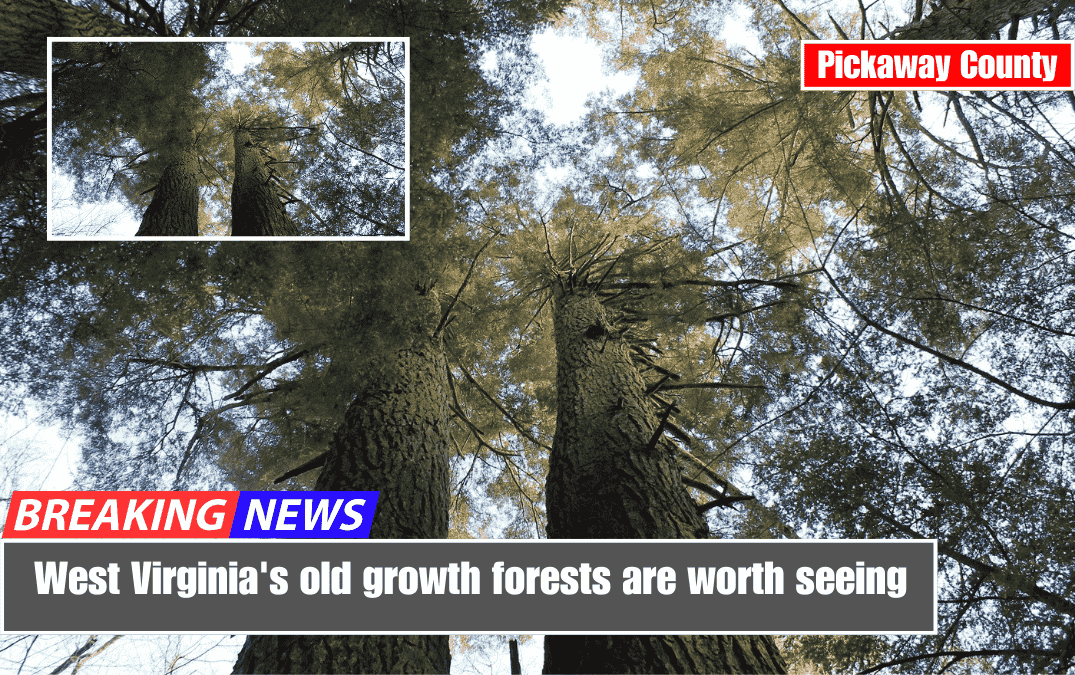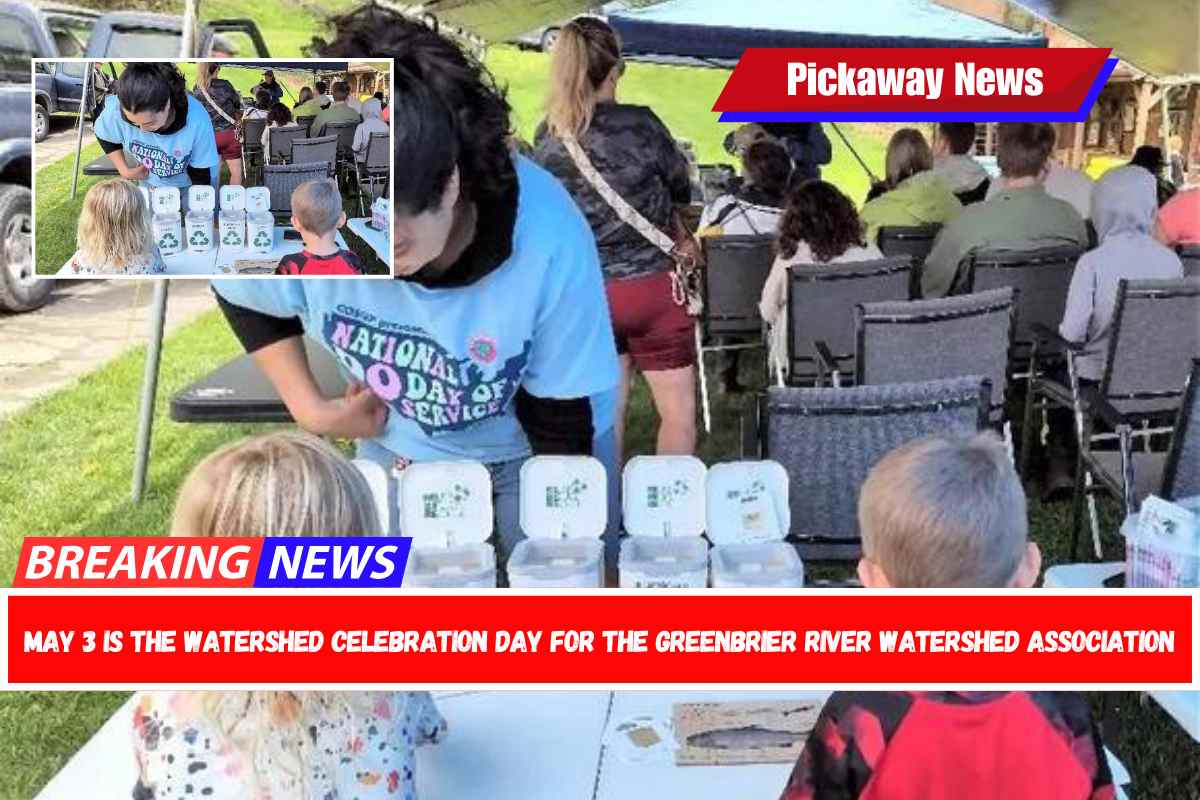Clarksburg, West Virginia (WBOY) — The New River Gorge National Park & Preserve commemorated the official induction of 12 acres into the old growth forest classification, but West Virginia also has 11 other old growth forests.
Old-growth forests have never been cleared or harvested by humans and are distinguished by large, mature trees that are typically hundreds of years old.
An executive order signed by President Joe Biden in 2022 called for the inventory of old growth forests in order to protect ecosystems. According to the initial inventory on the Bureau of Land Management’s website, the eastern states had zero acres of old growth forest.
According to the NRGNPP, West Virginia was once covered in old growth forests, but the majority of them were destroyed by large-scale commercial logging in the 1900s.
Currently, less than 1% of West Virginia’s forest is classified as old growth. According to the Old-Growth Forest Network, West Virginia has only a few small pockets where old growth forests have survived, unlike California or Alaska, which have vast forests.
Some areas have also become secondary old growth forests, which means that the forests were once cut down but have since regrown with many of the characteristics of an old growth.
Cathedral State Park
Cathedral State Park, the largest old growth forest in West Virginia, provides a glimpse into what West Virginia would have looked like without logging. Preston County’s hemlock forest, which covered 133 acres, had trees up to 90 feet tall and 21 feet in circumference.
Gaudineer Scenic Area
The 50-acre forest plot, located in the Monongahela National Forest and West Virginia’s highlands, contains both old-growth and second-growth red spruce, which are only found at higher elevations, as well as yellow birch, beech, red maple, and sugar maple.
Some of the trees measure 40 inches in diameter and are thought to be 300 years old. To explore the area, take Allegheny Trail #701 and the Gaudineer Interpretive Trail.
Twin Falls Resort State Park
Within a 777-acre area in Wyoming County, there is a significant contrast between the state park forest and the privately owned, timbered land surrounding it, demonstrating the distinction between old-growth and second-growth forests. Three park trails, the Hemlock Trail, the Cliffside Trail, and the Fall Trail, will provide access to the old growth.
New River Gorge National Park & Preserve
Burnwood Trail – The 12 acres in the Burnwood Day Use Area were added on August 4, 2023. According to a press release from New River Gorge National Park and Preserve, numerous trees date back before 1800, with some samples dating back to 1670.
Stone Cliff Old Growth –This 11-acre area was overlooked when the majority of the current preserve was logged in the past. At the end of the Stone Cliff Trail, there are chinquapin oaks, northern red oaks, bitternut hickories, and buckeyes, some of which are two to three feet in diameter and estimated to be 100-200 years old. The Brothers Who Lived in a Tree in West Virginia
Bethany College Parkinson Forest
Located in Brooke County, 60 acres of the 261-acre Parkinson Forest are considered old growth, with sugar maple, American beech, red oak, tulip trees, and white oak estimated to be nearly 250 years old. The Bethany Trail System provides access to the forest.
Pierson Hollow at Carnifex Ferry Battlefield State Park
Nicholas County contains 30 acres of old growth along the rim of the Gauley River Canyon. Near the bottom of the Pierson Hollow Trail, visitors can see hemlock, tulip poplar, and northern red oak trees that are 250 to 400 years old.
Giant Tree Trail/Hollow at North Bend State Park
According to the Old Growth Forest Network, approximately 15 acres along the trail exhibit all of the characteristics of an old growth forest. Four tree species in that area hold West Virginia’s height records, including
Marie Hall Jones Ancient Forest Preserve
A native West Virginian donated this 180-acre preserve in Doddridge County to honor his other. It opened to the public on August 6. The West Virginia Land Trust manages approximately 15 acres of old-growth forest.
Wilderness Trail in Holly River State Park
Although the 8,101-acre Holly River State Park in Webster County is still being surveyed, there are several areas with old growth, including the Wilderness Trail and Potato Knob Trail. Some northern red oaks and chestnut oaks are thought to be over 200 years old, and there are also ancient tulip and black cherry trees.
Wilderness Area in Watoga State Park
The exact size of this old-growth area, located along the Ann Bailey and Burnside Ridge trails in Pocahontas County, is still unknown. The Old-Growth Forest Network reports the discovery of numerous ancient species, including white oak, red oak, chestnut oak, black oak, yellow poplar, black gum, pitch pine, white pine, mockernut hickory, black birch, and cucumber tree.
Some white oaks are estimated to be 300–350 years old. How West Virginia’s island amusement park was removed from the map
Eastern Watershed Tracts of Kanawha State Forest
Although the majority of the forest is classified as secondary old growth, some old growth trees, such as white oaks, chestnut oaks, northern red oaks, and yellow poplar, are more than 250 years old, and white oaks are likely more than 300 years old. This area of the Kanawha Forest is also home to a variety of animals and rare plants.
The 1812 Lost Trail Hollow Forest at Beech Fork State Park
Officials believe the 40 acres of forest have been relatively unaffected by humans since the War of 1812, as there are no roads or cattle trails and few invasive species.
Although it is classified as secondary old growth rather than true old growth, it still contains trees that are 150-250 years old. To see this forest, take the Lost Trail or the Mary Davis Trail, but be warned that both are considered difficult.
According to the West Virginia Encyclopedia (2012), the oldest table mountain pine is over 280 years old on Pike Knob in Pendleton County, and the Murphy Tract in Ritchie County has small white oaks that are over 400 years old. The Virgin Hemlock Trail in Preston County, near Coopers Rock State Forest, also includes a grove of hemlocks that are over 300 years old.










